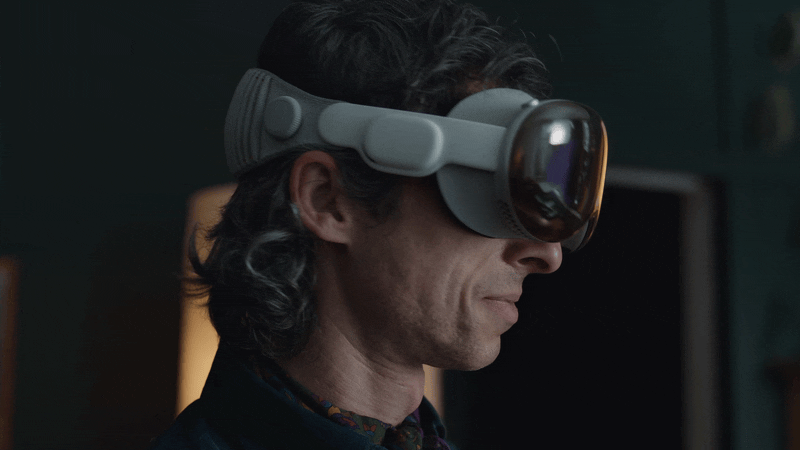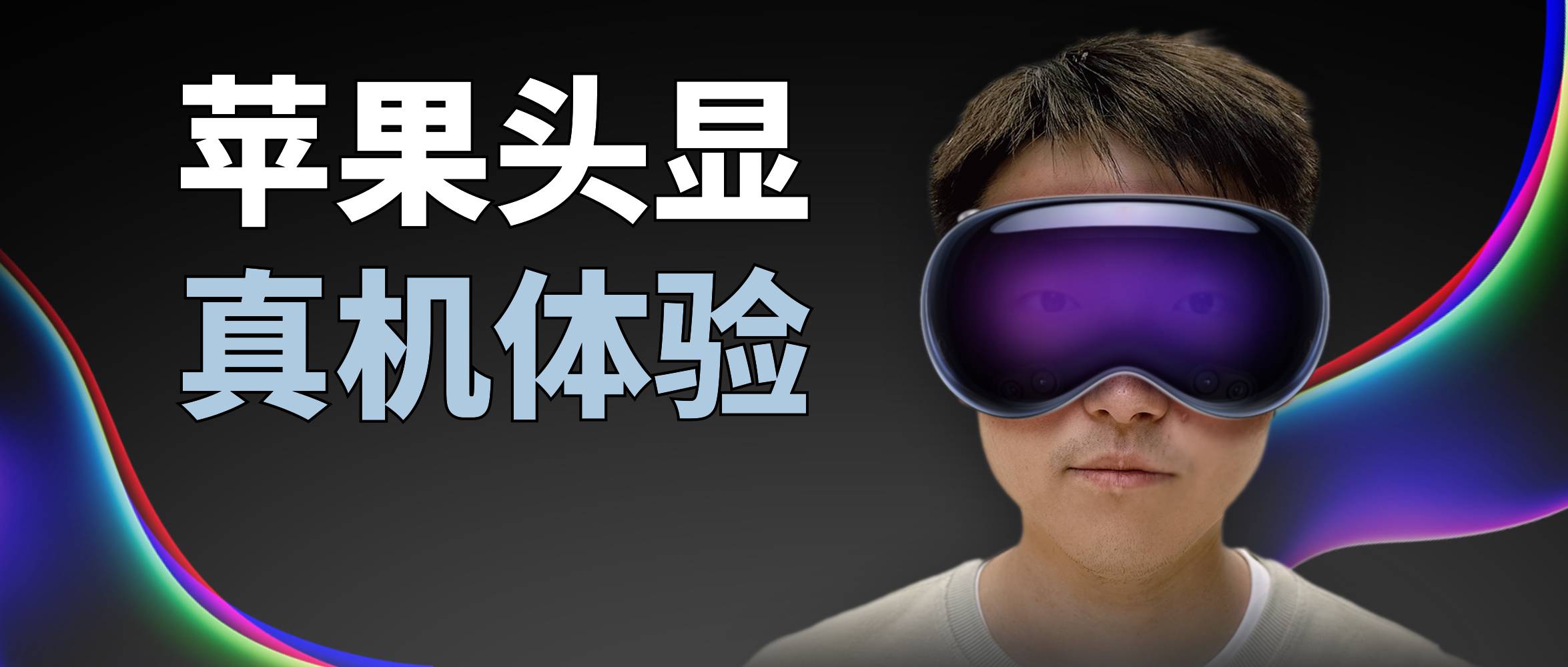For the first time, I felt the lack and powerlessness of words.
On the second day of WWDC23, on behalf of Ai Faner, I became the first group of people in the world to experience Vision Pro. Since video recording is not allowed on site, facing such a high-dimensional computing device, I can only use two-digit bytes to outline some only imagination space for everyone.
Q: What kind of preparation work is required before wearing?
For the media demo of Vision Pro, Apple built a white house called Fieldhouse in the northwest area of Apple Park. Although it is a temporary area, I can’t see it as a mobile prefab house at all.
After entering the arena, the enthusiastic Apple staff demonstrated how I completed the preparation work. I scanned the facial information and auricle information with the iPhone. The facial information is used to select the most suitable eye mask for the face. The process is very similar to the entry of iPhone FaceID. For the experience of calibrating spatial audio, just turn your head 90° left and right. The whole process takes less than a minute.
Q: Is it affected by myopia users?
does not affect.
I brought my own contact lenses. However, at the scene, the staff measured the degree of my glasses lens and customized a lens. The lens is magnetically attracted to the inside of the Vision Pro eye mask.
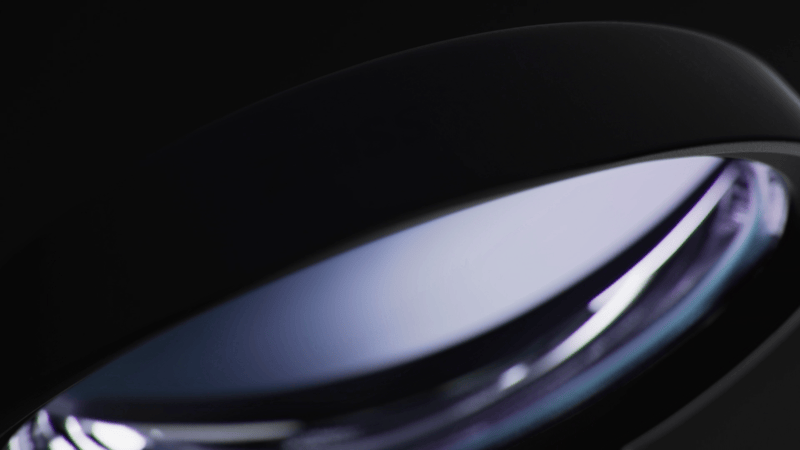
Q: How to wear Apple Vision Pro? What settings should be made at startup?
Vision Pro’s eye mask is magnetically attached to the body and can be replaced. Since my face is like a washbasin, the eye mask does not fit very well. Like most VR devices, there will be light leakage under the bridge of the nose. The staff said that the retail version will adapt eye masks to more face shapes.
When wearing it, the staff will suggest pinching the narrower area in the middle of the glasses to avoid contamination of the camera with fingers.
There is a knob on the right rear of the head beam to adjust the tightness of the head.
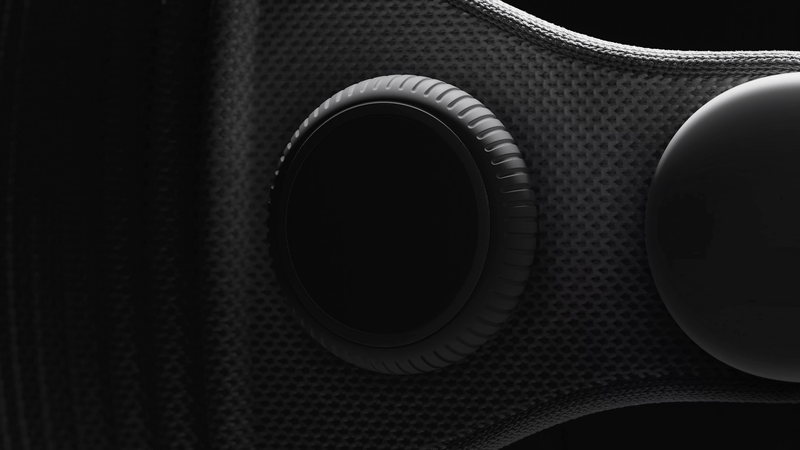
Different from the official website and promotional video, a strap is also installed on the top of the fuselage to share the weight, but it will inevitably crush the hairstyle.
At the left rear of the fuselage, there is a white braided cable more than one meter long, which is connected to the external battery. The external battery provides two hours of battery life.
However, under the shackles of battery life, I think that this split type is a better existing solution.
The external battery is not removable, and it is estimated to have the function of a variable voltage power supply, but it is equipped with a Type-C port, which can be continuously powered by an external power supply.
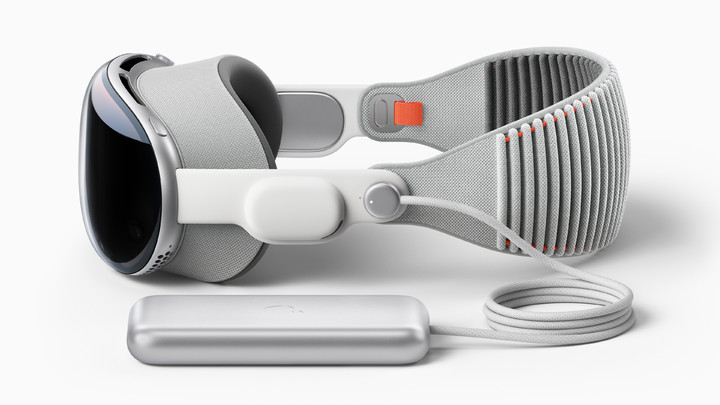
After wearing, the machine needs to set up eyeballs and gestures first. Vision Pro gets rid of the handle and relies entirely on eyeballs, gestures and voice for control.
First of all, I need to stare at the bright spots that appear in the center of the screen one after another. These bright spots form a hexagon. The first time is a completely black environment, and the second time the environment will become brighter. Because of different brightness, the degree of constriction of the pupil of the human eye is different.
Palm setting is even easier, just reach out your hands.
Then press and hold the digital knob on the upper right corner of the machine to complete the entire setting.
At this time, the same dynamic Hello screen of iOS and macOS will appear on the screen, floating in the air in a three-dimensional posture.
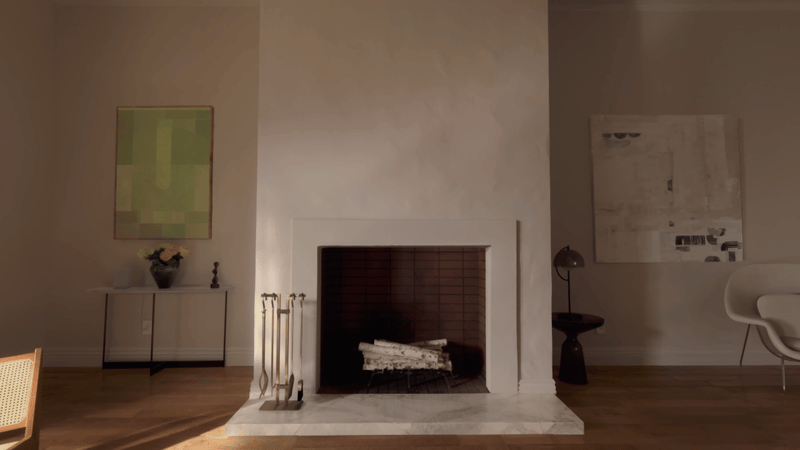
Q: Is the Vision Pro sinkable? Can you hold your head down?
It is obviously lighter than Quest Pro (722g), and may be similar in weight to Pico 4 Pro (458g), without any obvious pressure on the head. After wearing it for half an hour, I didn’t feel any discomfort.
Add background: My head circumference is 63cm, even if I look at five kilometers, I am still a leader.
Q: How is the immersion?
The picture is very clear, there is no screen door effect, no particles and pixels can be seen at all, it is undoubtedly the clearest headset I have ever experienced, and there is no problem at all for reading documents and browsing the web.
The penetrating field of view, that is, the effect of seeing the external environment through Vision Pro, is as clear as the Sony a7RIII electronic viewfinder in my hand to see the world. I can even read the screen of the mobile phone through the device. Whether it is color, clarity, or frame rate, it is far better than Meta Quest Pro and Pico 4 Pro, but it is still very different from the world seen by the naked eye.
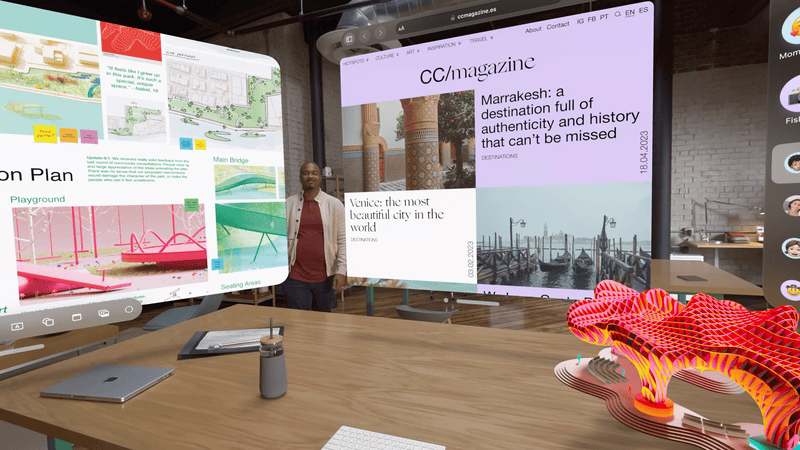
Occasionally, slight image jitter can be seen through the field of view. As long as you don’t turn your head very quickly, you can hardly feel the delay. I try to quickly wave my hands in front of my eyes, and only then will there be some “breakthroughs”, such as the jelly effect, and incomplete keying. question.
There is some green and purple color cast around the edges of the frame, but it’s not too noticeable.
What needs to be mentioned is that the ambient light on site is not bad, and it has not been tested in dark light.
During the half hour of the experience, I did not experience dizziness.
Regarding the FOV (field of view), the official data has not been released. As far as I am not completely reliable, it may be similar to the FOV of Quest Pro and Pico 40 Pro. The field of view will be blocked by black edges, just like looking at the world through a telescope.
Overall, I think the immersion of Vision Pro is very good, and it is the well-deserved NO.1 among all the headsets I have experienced.
👓 Head-mounted display immersion
The core of the headset experience lies in immersion, and the core indicators include:
- Resolution: This is easy to understand.
- FOV (Field of View): The range of angles within which vision can accept images. The human binocular field of view reaches about 188 degrees, and only the frontal 60-degree human eyes can focus and focus, leaving about 128 degrees of afterglow is the key to affecting VR immersion.
- Passthrough field of view allows users to see images of the real world while wearing the headset. However, penetrating field of view is usually achieved by transmitting images from a camera, so its quality and stability may be limited by equipment and cameras.
- Sound: The orientation of the sound.
- Latency: We also need low-latency inward tracking and “realistic” interaction with the world around us. The helmet needs to be able to sense and respond to your head movements quickly and accurately. When you turn your head to the left, the view on the screen immediately moves to the left. If this process is delayed, dizziness or discomfort may occur.
Q: How to interact with eye tracking and gestures? How’s the effect?
After completing all the settings, long press to enter the main page, the circular application icon, familiar taste.
Eye tracking and gesture control cooperate with each other: the eyeball is used for positioning, which is equivalent to where the mouse stays, and there are only two gesture operations-open and drag.
Among them, the action of pinching the thumb and index finger is “opening”, and the movement of pinching is dragging.
There is a small episode in the middle: At first, I would instinctively stretch my fingers into the air to control the graphical interface, but in fact my hands can easily control it in any posture.

The cost of the whole set of interactive learning is very low, and you can get used to it in a minute.
The effect of eye tracking is amazing: the sensitivity, accuracy, and speed are very high, without any lag, and I have a feeling of pointing and hitting.
A typical example is that the staff asked me to look at the small dot at the bottom of the screen to close the page. I saw that it is so small, and there is a very close horizontal bar at the bottom of the screen (used to drag the window position) . Unexpectedly, there was no misoperation.
This excellent experience also comes from the blessing of visual and sound effects. When I focus on graphic elements, the icons will have very smart bumps, layer changes in shadows, and even sound effects.
And when I pinch my fingers and shake it out, the window will be extremely silky like the trajectory of the real world.
In fact, eye tracking is not Apple’s first, but Apple is the first company to use it completely for human-computer interaction.
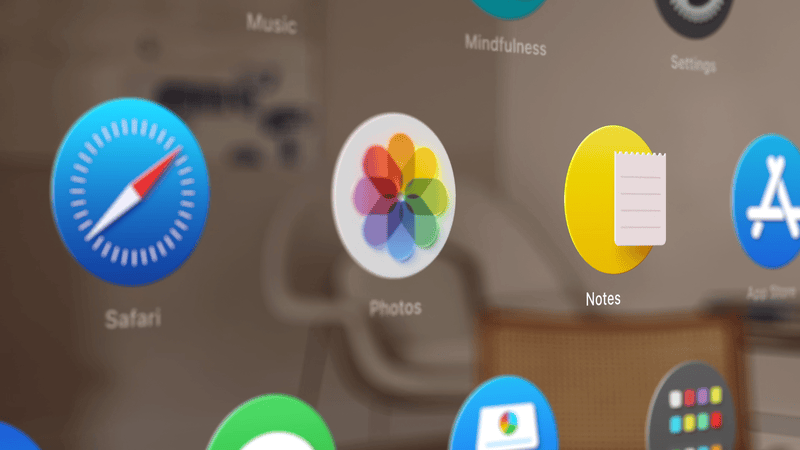
Q: How is the experience of viewing photos on Vision Pro?
Same application, totally different taste. I can zoom in the photo to the scale of the whole room by dragging the magnification control in the lower right corner of the photo. When viewing the panoramic photo, I have the feeling of being in the shooting scene.
Q: How does it work when using Persona?
Apple arranged for an employee who had set up Persona in advance to have a FaceTime with me. After answering the call, the video interface was like a picture frame, with a protagonist of a 3A masterpiece in it. nature. Although it is not perfect yet, the communication distance is much closer.
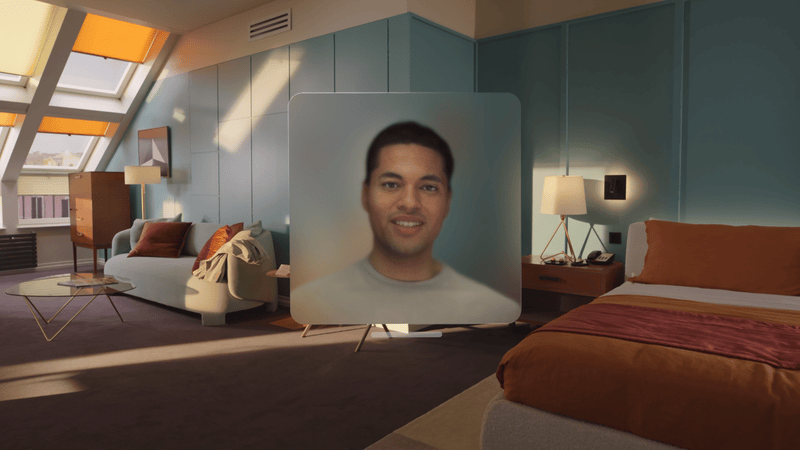
Q: What are the impressive features?
Eye tracking and gesture control certainly count.
If you have never had a VR experience, the 3D camera must also be a feature that can make you exclaim.
Apple showed me some photos and videos taken directly from the Vision Pro. One of the videos shows a little girl blowing out a candle. I can really feel the smoke coming from the candle after it goes out.
If any scene can be compared, it is the Pensieve in Harry Potter.
A similar experience can actually be found in other VR headsets, but the higher definition undoubtedly brings a better sense of immersion.
I think this function can be called the Killer app of Vision Pro. Its value lies in not only being able to watch, but also to shoot and create.
From this perspective, it increases the dimension of information dissemination. For example, when industrial designers hold a remote meeting, they can take a 3D photo of the product and share it with each other. The other person doesn’t have to look at the 2D screen to imagine what it looks like in reality.
On the other hand, this is also a very human function. Those people and things that you can’t let go of, those space and time that you can’t keep, are all frozen in an instant, in a real sense.
It’s a pity that the shooting experience is not provided on site. I am very curious whether my random shots can create the same sense of immersion as the official proofs.
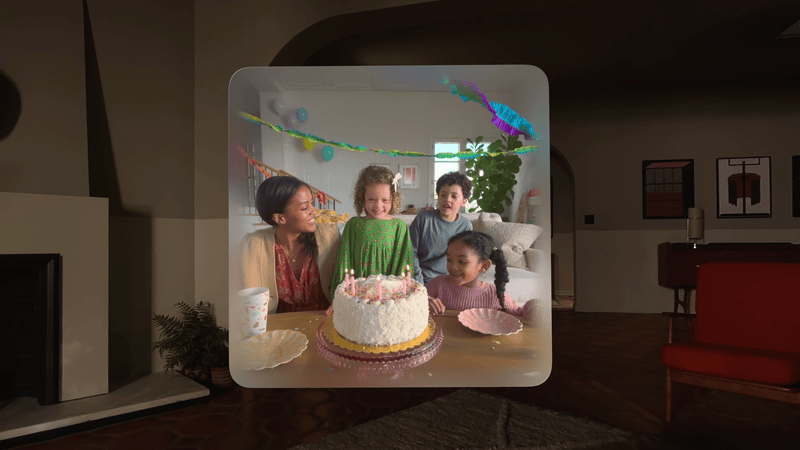
Q: What is the switching effect between reality and virtuality?
By switching the knob, you can adjust the sense of immersion, and you can understand whether the external environment is present when watching virtual content. In terms of processing space interaction, Apple fully draws on the sensory experience of the physical world. The transitional dynamic effect is very good, and there is a gradual escape The black fog or the feeling of the black fog dissipating.
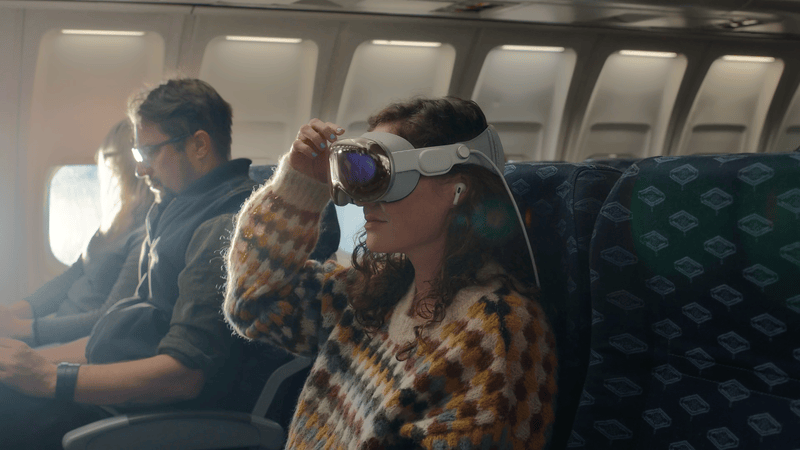
Q: What else is this knob used for?
- Short press to return to the home page, similar to the Home button.
- Double-tap to force quit.
- Long press the screen to return to normal.
Q: How was the viewing experience?
Apple played a piece of “Avatar” for me. The picture quality is clear and the 3D effect is excellent. With the spatial audio of head tracking, it can also achieve a very good surround sound effect. Although it is not as good as IMAX, it has already surpassed most TVs. Movie experience.
The movie screen can also be switched to theater mode, which is similar to the viewing effect of a movie theater, and you can even choose front and rear seats.

Apple also demonstrated the Apple TV+ content made for Vision Pro for me. A three-dimensional Apple logo will slowly emerge in the opening title, and there are various outdoor landscapes in the picture, such as surfing on the sea and cliffs.
Q: What AR experience do you have?
The only demo that can be called AR is an interactive video: a window will be slowly opened on the wall, and then a dinosaur will poke its head out from the wall. When I walk towards the dinosaur and wave at it, the dinosaur will respond.
Then a butterfly flew out from a distance, I stretched out my finger, and the butterfly would stay on my fingertip.
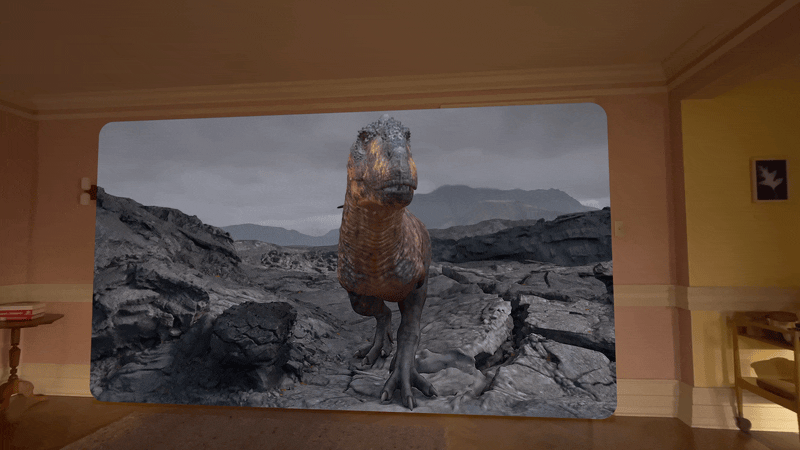
Q: What other interesting details?
During the viewing process, when I turn my head to the person I am talking to, the person will gradually emerge from the screen. Please pay attention to the word development, the gradient is very smooth.
Q: How is the sound experience?
In a sense, spatial audio has become the AR of the sound dimension. When I turn my head and the picture follows, the direction of the sound will change accordingly, which is in line with the experience in reality.
Q: What other official app experience?
“Mindfulness”, the dynamic effect of virtual breathing fills the entire space, and there is a feeling of enveloping me. With the spatial audio, it is like being in Teamlab.
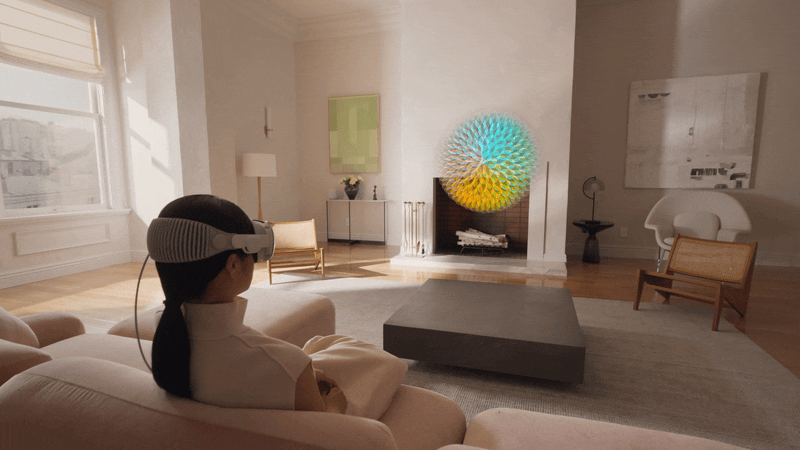
Q: What exactly is Vision Pro?
In fact, after a brief experience, I’m not sure if it’s an MR device or a top-level VR device: on the one hand, it has the underlying hardware for AR modeling, and on the other hand, it’s more about extending the desktop experience to the space above.
Interestingly, in the promotional video of this product, Apple did not mention AR, but emphasized more on the concept of “spatial computing”.
A reasonable explanation is that Apple wants developers to play with their whimsy on AR scenes.
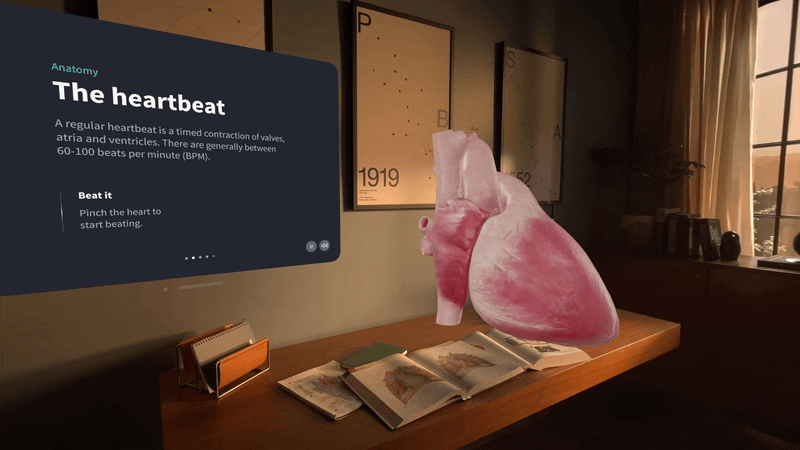
▲Heart AR model made by the developer
Q: What are the applicable scenarios? Can it be used outdoors?
It is mainly used in home and office environments, and it is also more suitable for travel occasions such as airplanes or trains. Imagine “carrying” multiple high-resolution displays anywhere; imagine writing code in Starbucks, enjoying a cappuccino while getting a complete desktop computer experience with multiple large screens.
This is the greatest significance of spatial computing.

Q: The official promotional video is rendered. What is the difference between the actual experience and the official promotional video? Will it be like Google Glass back then?
The overall fidelity is high, but the immersion is not as good as the rendered video, because the field of view can still see the black border, and the light leakage under the eye cup will immediately bring me back to reality.
The experience involving 3D images, I think the effect is beyond the promotional film. It’s like, you can’t feel the shock of a 3D movie theater with your mobile phone.
Q: Do you feel strange wearing it?
In general, I’m not sure everyone can accept wearing a pair of external glasses, and I’m not sure whether it can undergo a design reversal like AirPods and become a meme.
You can ask yourself if you would like to wear it and sit by the window of Starbucks, enjoying the surprised eyes of passers-by.
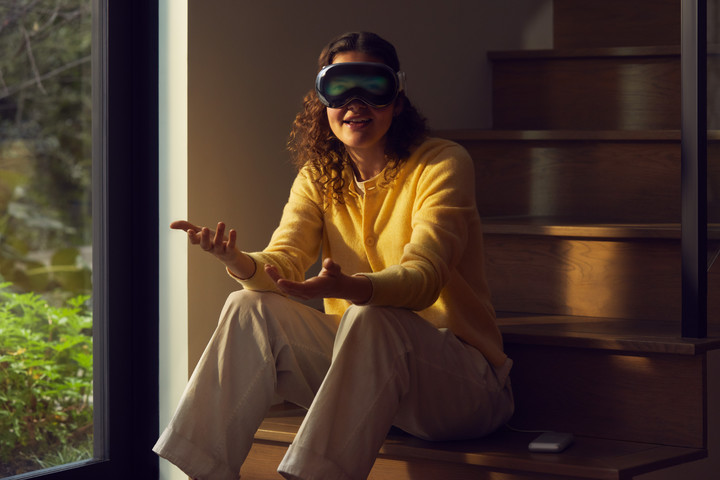
Q: Vision Pro has a beautiful external screen, what is it for?
Apple doesn’t want the headset to isolate the user from the outside world. When someone is nearby, the Vision Pro’s outer screen becomes transparent, allowing those around to see the user’s eyes.
For example, if you are watching an app, people around you can know that you can see them. But at full immersion, the mask becomes a blur, and those around you know you can’t see them.
This function is called Eyesight, which fully demonstrates Apple’s humanistic attributes.
Unfortunately, I can’t see what the screen is showing.
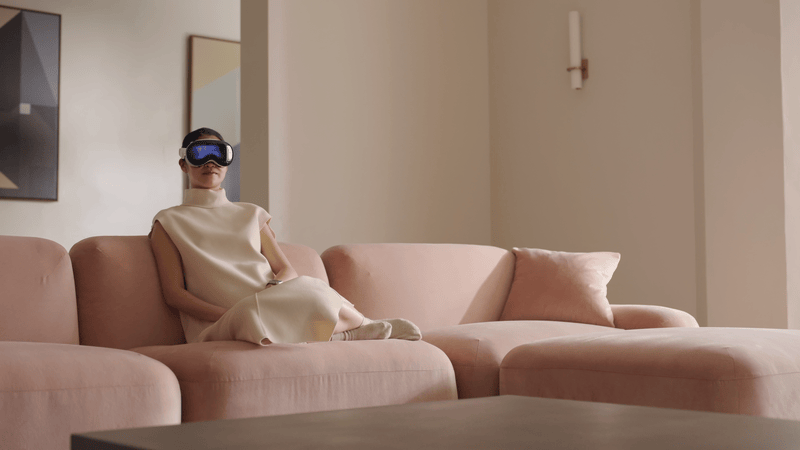
Q: Will Vision Pro succeed?
Regardless of Vision Pro positioning MR or spatial computing equipment, it is still a wearable product in essence. The first problem to be solved for this type of product is whether the user is willing to wear it psychologically and physically, and whether it can be worn for a long time. That remains to be seen.
The second point is whether the unique value it brings can offset the burden of wearing it. The unique value here does not include the freshness of entering a new platform, but the killer app that really retains users.
Browsing the web and watching movies, in my opinion, are more old wine in new bottles, icing on the cake, logically not enough to completely subvert the traditional experience of TV and computer.
But “3D camera” can definitely be called a native application of the AR platform. After a hundred years after the birth of color images, we can finally use another display technology to freeze time.
Unlike other apps, the 3D camera is a unique experience exclusive to this platform, and you cannot restore this feeling on any traditional medium.
Humanistic value is often the underlying reason for technological success.
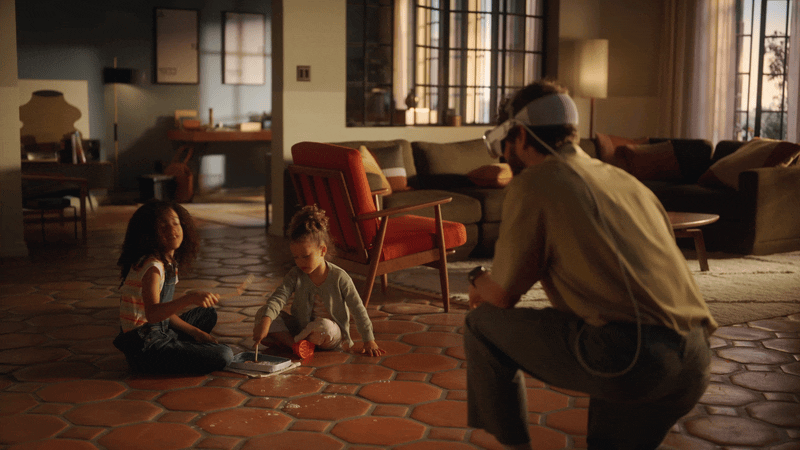
welcome to the new universe
Vision Pro is Apple’s master in the field of personal computing. I can see many shadows of Apple’s human-computer interaction and technical layout in the past ten years on this product – graphical interface, Apple Silicon, spatial audio, FaceID, LiDAR…
It is the best headset in existence: it brings the highest picture quality ever, and revolutionizes the home audio-visual entertainment experience; it completely kills the handle of the headset, and provides a revolutionary spatial interaction in the most natural way; it Let the content creation break away from the two-dimensional plane, and make the freeze-frame time and space a reality.
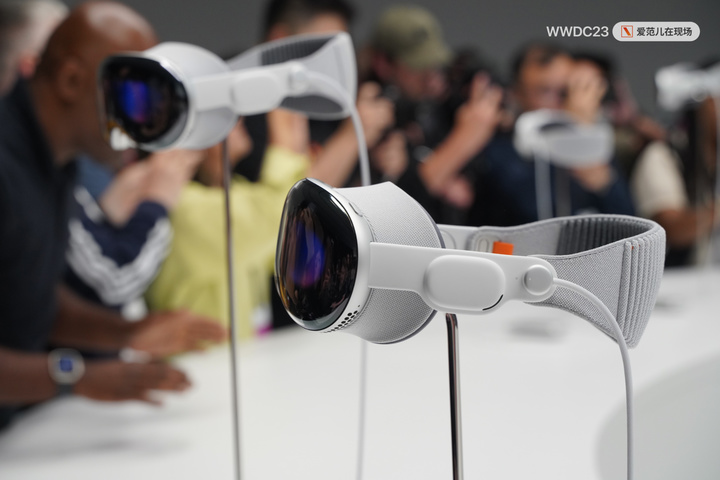
Even though it has superimposed so many cutting-edge technologies, it still has unavoidable shortcomings:
It is still not light enough, and it is still doubtful whether it can attract users to wear it continuously;
It is still an indoor mobile device, and the distance of LiDar determines that it cannot be used in outdoor spaces;
The external battery is presumably the best solution under the existing technology, but it can also immediately bring you back to the era when you kicked the Walkman in your trouser pocket and backpack;
There are not many applications based on real-world environments, and some Killer apps are still missing in terms of broadening the boundaries of information input and output.
These are not so much shortcomings as it is against time.
Vision Pro at least made me see a possibility, a possibility of making computing ubiquitous, a possibility of not relying on smartphones, a possibility of making science fiction not just science fiction.
Welcome to the new universe.
